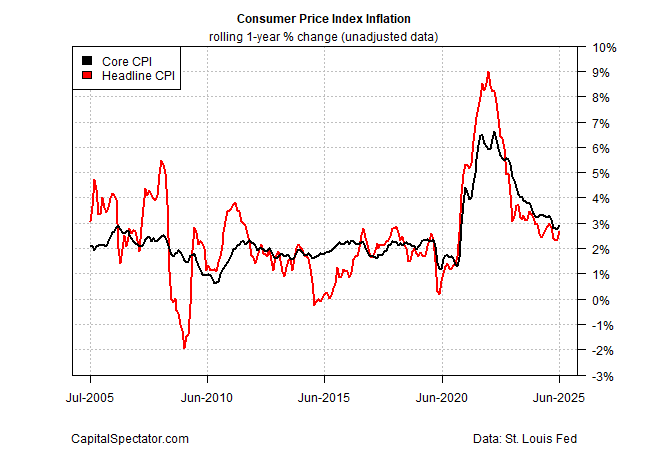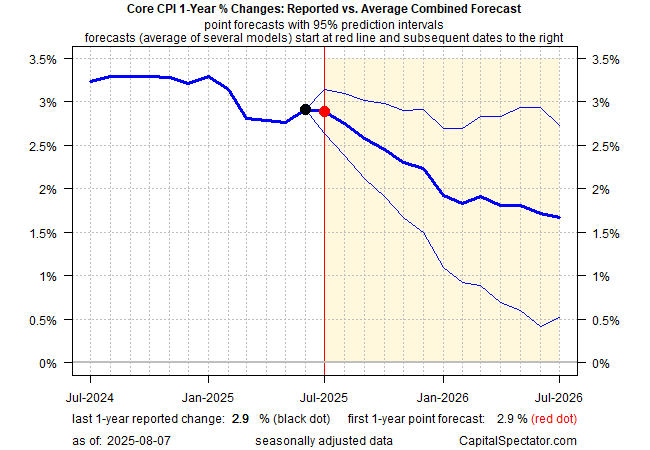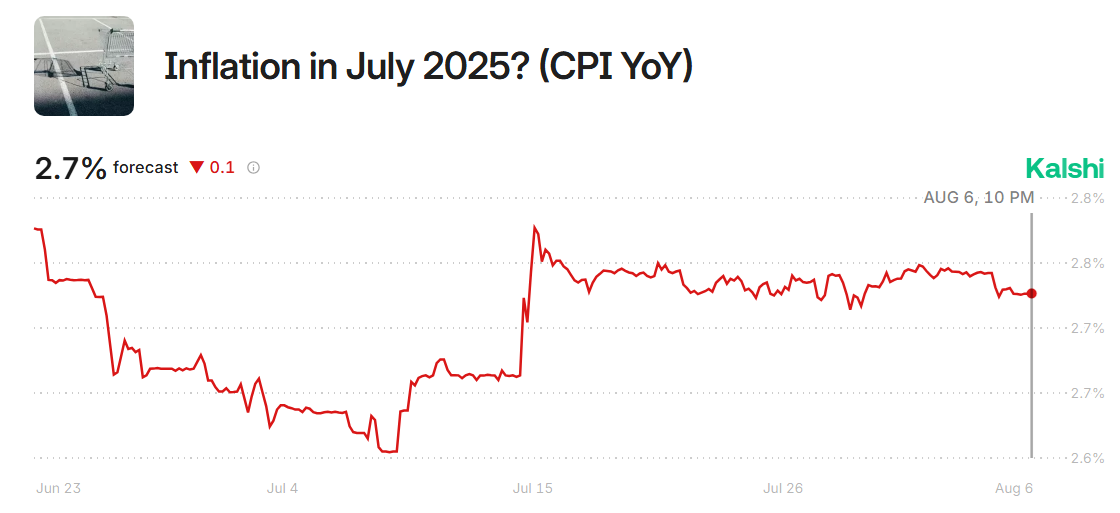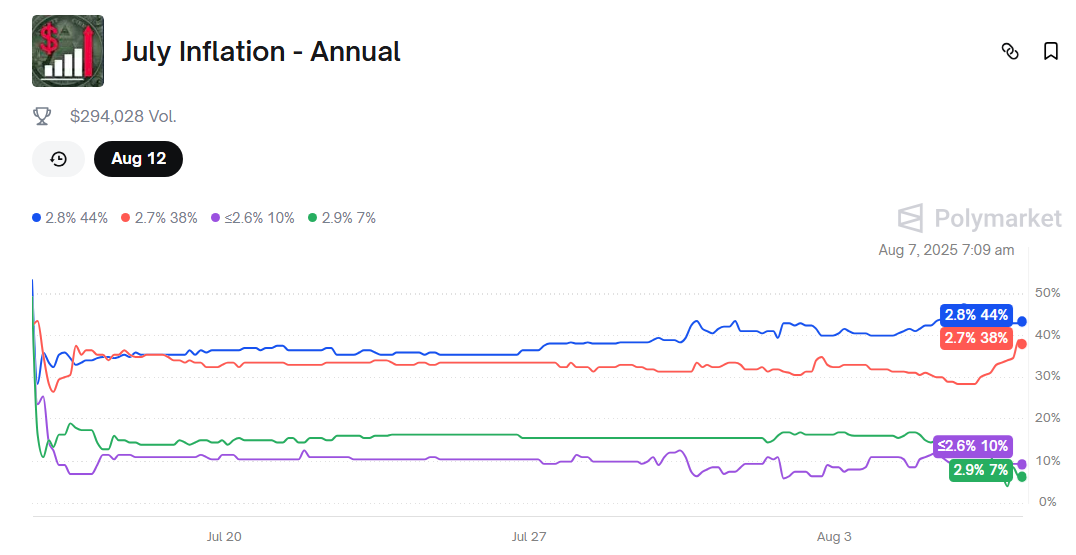IonQ CRO Alameddine Rima sells $4.6m in shares
President Trump’s new round of “reciprocal” tariffs kicks in today, a shift that focus attention anew on forecasts by many economists that the levies on imports will raise inflation, if only temporarily. The outlook will be stress-tested with next week’s July data for the consumer price index (CPI), set for release on Tues., Aug. 12.
Beth Hammack, president and CEO of the Federal Reserve Bank of Cleveland, earlier this week said that inflation could tick higher this year as businesses start to pass on the cost of higher tariffs to consumers through price hikes.
“Individual businesses have been trying to hold back on, passing on those [tariff] costs, because they’re worried about what it might mean for demand,” she advised. “They’ve been selling inventory that they’d accumulated early in the year, and so they didn’t need to charge for the tariffs on that, but they’re coming through those stockpiles.”
Next (LON:NXT) week’s CPI update will be keenly read for signs on whether that concern is resonating. For some perspective on what the report may contain, let’s review the data published to date, followed by a short summary of expectations. Start with year-over-year CPI through June. As shown in the chart below, headline and core CPI edged higher to 2.7% and 2.9% year-over-year rates, respectively.
The slightly firmer reading mark the first back-to-back increases for the annual pace of inflation for both series in more than three years. In absolute terms, however, it’s still reasonable to assume that the overall inflation rate hasn’t changed much.
The Capital Spectator will focus on core CPI data (excluding volatile food and energy prices), which offers a more reliable measure of the trend vs. the noisier headline numbers. Our ensemble model forecasts no change in core CPI change in July vs. the year-ago level, based on the point forecast.

Betting markets are currently leaning into expectations that June’s year-over-year increase for headline CPI will remain more or less steady. Data at Kalshi points to annual inflation holding at 2.7%.
The outlook via Polymarket favors a fractionally higher inflation rate for July at a 2.8% year-over-year change.
Many analysts advise that tariff-related inflation will take time to show up in the data. Based on current expectations for next week’s CPI numbers, the wait looks set to continue beyond next week’s CPI update in the search for a meaningful signs of hotter price effects.
